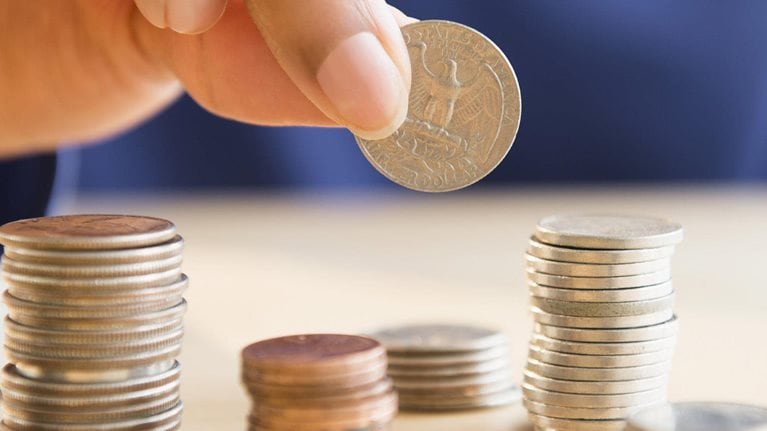So much can change in just a few years. For most of the past decade, up until a couple of years ago, Brazil enjoyed a dramatic boom in consumption. Thirty-five million Brazilians—18 percent of the population—ascended to the middle class. As of 2012, Brazil’s middle class encompassed 115 million people, or more than half of all Brazilians.1
But economic conditions in Brazil have taken a negative turn. Today, the country is facing one of the most severe recessions in its history. Will this recession be a short-term dip or a long slog? How are consumers changing their buying behavior? What can consumer-packaged-goods (CPG) and retail companies expect, and how should they adjust? What can Brazil learn from other countries’ postrecession experiences—and are those lessons even applicable in Brazil?
Our recent survey of 1,000 Brazilian consumers confirms that most of them are indeed worried about their financial prospects and curtailing their spending. The Brazil survey was part of our broader global survey involving more than 22,000 respondents in 26 countries. Our aim in conducting the survey was to understand how consumers feel about their financial prospects and how these sentiments are affecting their buying behavior (see sidebar, “Our survey methodology”). We found that even amid sharp declines in consumer confidence and private consumption, consumer companies can still find pockets of opportunity in Brazil.
Cautious, concerned, and conservative
Consumer confidence in Brazil was the lowest among 26 countries surveyed: only 8 percent of Brazilians were optimistic about the national economy (Exhibit 1). This bleak outlook is a departure from the positivity and optimism that Brazilians have historically displayed even in troubled times. It appears that the country’s most recent economic woes have significantly shaken Brazilians’ confidence.

Fully 72 percent of Brazilians said they were worried that someone in their household would lose a job in the next year, and 49 percent said they were living paycheck to paycheck.
Would you like to learn more about our Consumer Packaged Goods Practice?
A bump up in income wouldn’t spur Brazilian consumers to spend much more. Even if their earnings were to rise by 10 percent, they said they’d spend only one-fourth of that extra money, much of it on everyday necessities such as food and drink. Almost half of the extra income would go toward savings and one-third toward paying off debt.
Five attributes
The survey responses brought to light a set of behavioral shifts among Brazilian consumers. Most of these behaviors are also evident among consumers elsewhere in the world,2 but they are amplified and intensified in Brazil. Consumer companies operating in the country would do well to view these shifts as a call to action.
1. They proactively search for savings.
Consumers in Brazil are changing their buying behaviors in a variety of ways. Almost three out of every four respondents in Brazil agreed that they’re “increasingly looking for ways to save money” (Exhibit 2). More than half said they are paying more attention to prices, actively looking for sales and promotions or delaying purchases. Many are also shopping at multiple stores to find the best deals or waiting for products to go on sale. In addition, Brazilian consumers are making thriftier food choices, with 42 percent saying they chose to eat at home more in the past year.

2. Some remain brand loyal—but only if the price is right.
More than one-third of Brazilians claimed they haven’t abandoned their preferred brands but are shopping around to find retailers that sell these brands at lower prices; 19 percent are purchasing in smaller quantities; and 14 percent are waiting until the brands are on sale or buying only with discount coupons (Exhibit 3).

3. Once they ‘trade down,’ they might not go back.
Twenty-one percent of Brazilian consumers (versus 12 percent globally) said they traded down to less expensive brands. This number varied considerably by category; laundry supplies, household-cleaning products, and bottled water had the highest trade-down rates.
Only 18 percent of consumers who traded down opted for private-label products. By contrast, in Latin America as a whole, 26 percent of down-traders chose private-label products; in more mature markets such as the United Kingdom and the United States, the figures were above 60 percent. Indeed, private-label or store brands in Brazil, although growing, still account for only a small fraction of total retail sales (5.1 percent, equivalent to approximately $970 million, according to data from Nielsen).
Among Brazilian down-traders, 60 percent said they don’t intend to go back to the more expensive brand (Exhibit 4). It’s worth noting that US and European consumers who traded down during the global financial crisis have only recently begun to trade up again. If Brazil follows the same pattern, down-traders in Brazil will be trading down for at least the next few years.

4. There are splurgers in select categories.
Even as most Brazilians sought to save money, some opted to trade up in certain categories. Although Brazil’s trade-up rate of 5 percent is much lower than the global average of 11 percent, it’s still meaningful in the handful of categories that clearly matter to consumers—in particular, alcoholic beverages and personal-care products. For example, 15 percent of consumers indicated they traded up in beer, 11 percent in wine, 10 percent in spirits, and 9 percent in cosmetics. Interestingly, in beer, a higher percentage of consumers stated having traded up versus traded down (12 percent).
5. They shop across channels.
Brazilian consumers are shifting some of their spending to discount chains and the cash-and-carry format known locally as atacarejo, which combines both retail and wholesale. This trend isn’t unique to Brazil: in more mature markets, such as the United Kingdom, consumers have already shifted much of their spending to discounters and are beginning to make distinctions between discount and “premium” discount. However, one channel that has made huge strides in some developed markets—the online channel—isn’t yet a factor in Brazil’s grocery categories.
Imperatives for consumer companies
In light of these new consumer behaviors, how can consumer-goods companies and retailers position themselves for success in a tough economic environment? In our view, they would be wise to act on the following imperatives.
At every price point, think ‘value for money.’ With many consumers seeking savings opportunities, brands must give consumers solid reasons to choose their product over lower-priced alternatives. That means emphasizing not just the emotional attributes of a product but the functional benefits as well. They need to communicate a clear value proposition that resonates with consumers. Consider the success of salon-quality hair-care brands in several markets, including Brazil and the United States: these brands have been able to persuade consumers that they’re getting good value for money, even though the salon-quality brand might be twice as expensive as their old shampoo brand.

Urban world: The global consumers to watch
Invest in advanced revenue-growth-management capabilities. By investing in cutting-edge revenue-growth-management solutions and analytical talent, leading companies arrive at data-driven answers to critical questions like these: Which promotions are most effective and why? How should prices and promotions be communicated? Based on these insights, companies determine optimal tactics and then devise granular strategies for their brands, portfolio, and promotions—and refine these strategies for each channel, customer segment, and region.
Find granular opportunities for growth. To survive and thrive in Brazil’s challenging economic environment, CPG companies and retailers need a granular, data-driven approach to identify pockets of growth.3 Consumption growth can vary considerably, both by region (for example, certain small and medium-size cities in Brazil’s countryside are projected to grow at higher rates than state capitals) and by category (juices, for instance, are growing at two to three times the rate of carbonated drinks). Furthermore, a category’s growth rates can vary significantly across cities and states.
Review price architecture to capture both up-traders and down-traders. During downturns, Brazilians tend to gravitate to either high-end or low-end brands. CPG companies should have a clear and complete price architecture, with a premium offering to attract up-traders and a compelling low-priced offering aimed at down-traders and mass consumers. Higher-end products can justify their price points through a rich narrative (such as an artisanal process or a unique provenance) or new features. Value offerings, on the other hand, could emphasize bulk sizes, “basic” value cues in packaging or design, and no-frills but reliable quality and performance. Retailers, too, should consider offering a wider range of both high-end and low-end brands.
Be thoughtful about channel changes. With Brazilian consumers doing more of their grocery shopping in discount and cash-and-carry formats, CPG manufacturers must launch initiatives to serve these fast-growing channels. Such initiatives might include the creation of exclusive SKUs, second-tier brands, or new pack sizes (especially as Brazilians have shown a willingness to buy in bulk and to engage in “community shopping,” or sharing their purchases with family and friends).
Relentlessly optimize investments and operations. Efficiency is an imperative. Companies must untiringly pursue opportunities to optimize returns on their marketing investments, excel in store operations, and improve sales-force effectiveness. No drivers of value should remain unexplored; no excuses for delaying improvement initiatives should be made. The time is now to improve performance and efficiency and aim for excellence.
In the early part of the past decade, for many consumer companies, building a strong presence in Brazil was synonymous with capturing rapid growth. We believe that, in the long run, the country will resume its growth trajectory—but in the current environment, the six imperatives discussed above must be at the top of the executive agenda. Efficiency, in particular, is crucial for any company that hopes to succeed in Brazil.


